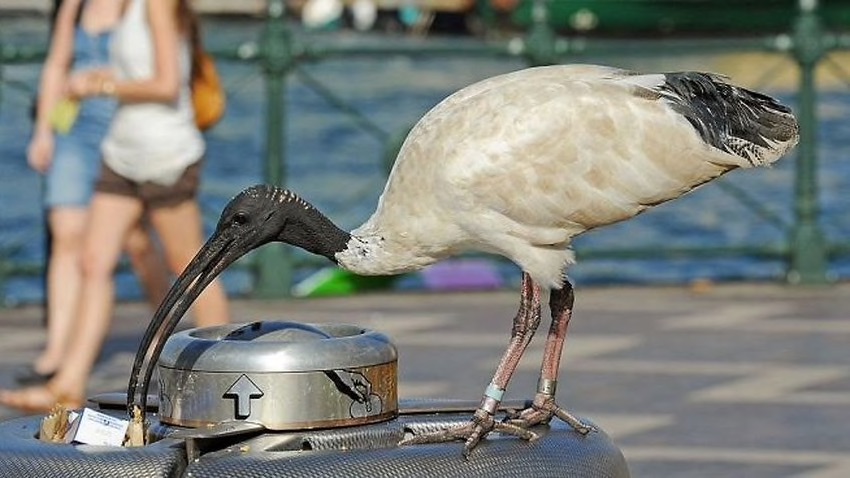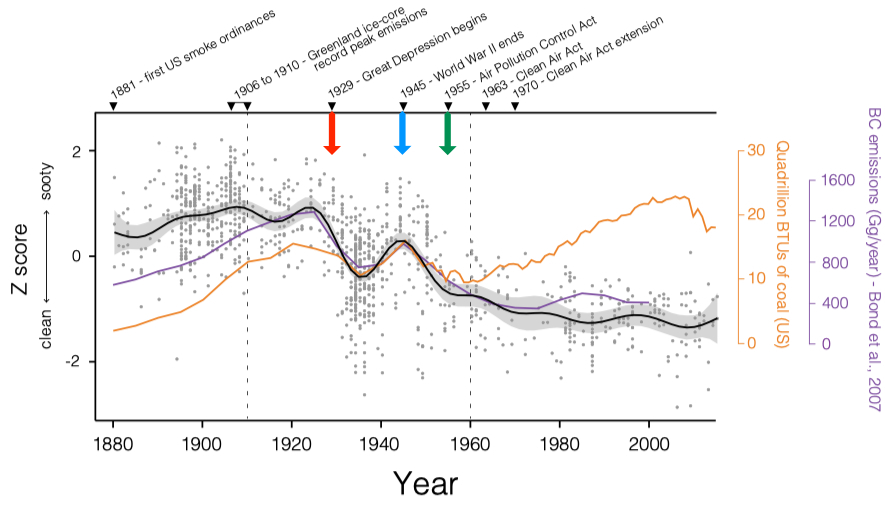As a teenager, in the 1960s, I spent much of my spare time during the school year hanging out at the Royal Ontario Museum (ROM), not far from my family’s home in Toronto. The denizens of the bird/mammal prep room in the basement of the museum—Don Baldwin, Hisham Badran, Jim Borack and Rolph Davis—took me under their wing and taught me how to prepare bird skins and skeletons for the collections. That experience led directly to my Dream Jobs #3 and #4 in 1967/68 when I stopped going to the University of Toronto in search of a more satisfying (and financially rewarding) way to spend my days.
Dream Job #3 had me working as a preparator for the Mammalogy Department, mainly preparing bat skulls sent in by a collector from what we still called British Guiana as it had only been renamed Guyana a year before. My Dream Job #4 was a Park Naturalist position at Algonquin Park where my first duties were to put their museum’s specimen collection in order. The contrast between breathing formaldehyde all day in the museum lab and inhaling the intoxicating scent of piney woods reminded me that I was really a naturalist at heart.
The Ornithology Department at the ROM was thrown into a bit of a tizzy in 1965 when they hired Jon Barlow [1], with his newly-minted PhD, to be curator. Jon brought new ideas and new methodologies with him and those changes—not surprisingly—upset the old guard and intrigued the young. Jon introduced us all to quantification (statistics!), cladistics, and phenetics [2] for the purpose of classification; to the value of skeletal and tissue material for museum collections (and, of course, systematics); to the need for rigour in field notes and detailed specimen labels [3]; and to the notion that examining intraspecific variation was useful—essential even—for understanding evolutionary change and speciation.
For those of us in the prep room, the biggest changes were that we focussed more on skeletal and tissue collections, and that skins should be washed in detergent to remove blood and dirt, then dried before making them into a study specimen. Barlow also taught me the “John Williams method” [4] of skinning birds by making an incision on the side rather than the belly, stuffing the skin with a cone of cotton, and finishing up without stitching up that initial incision. I used that method for a while but never perfected it and to this day use the traditional method of preparing study skins as outlined in Rudolph Anderson’s classic book on preserving vertebrate animals.

Barlow wanted us to wash bird skins not for aesthetic reasons, as you might expect, but because he was interested in measuring plumage colours accurately. Such colours would, of course, be obscured by dirt from dust-bathing or simply by the bird living in dirty environments, by foraging in evergreens where they would get resin on their feathers, or by blood and guts on their plumage while they were eating. He was interested in geographic variation in House Sparrows, to see how their colours may have varied (evolved) as they spread across the continent since their introduction in New York in 1851/52. He had studied with Richard Johnston at the University of Kansas and wanted to contribute to Johnston’s evolutionary analyses of that species. At first, we measured plumage colours by simple comparison to colour swatches in the Villalobos Atlas de los colores [5]. But Barlow was interested in exact quantification so we soon tried to modify a cumbersome desktop transmission spectrophotometer to measure plumage reflectance.
A recent paper by Shane DuBay and Carl Fuldner, at the University of Chicago, now suggests that by washing those bird skins we were flushing down the sink an important record of atmospheric pollution. On noticing that some bird specimens at the Field Museum of Natural History were quite dirty looking, they decided to investigate the source of that dirt. It turned out to be largely black carbon, which they verified by examining feather under a scanning electron microscope. They then developed a method using digital photographs of birds with white breasts to quantify the degree of light reflectance (less reflectance = more carbon deposited).

To examine variation in these carbon deposits on birds in the industrial heartland [6] of America, the researchers photographed and analyzed the white breasts of 1097 specimens of five species [7] collected over the past 135 years. They used the excellent collections at the Field Museum, the Carnegie Museum of Natural History, and the Michigan Museum of Zoology. Because these species all moult in the fall, and every fall, they took specimens only from the winter months, and could thus date stamp the deposition of carbon on the plumage to within a few months. The remarkable results are shown on the graph below. The black line shows their estimate of average carbon accumulation on the specimens from 1888-2015; the orange line shows the quantity of coal burned in the USA during that period; and the purple line shows the results of a comprehensive model to predict the black carbon emissions in those states.
Using the birds as an index of black carbon in the atmosphere, it looks like the amount of carbon was highest from 1880 until the beginning of the Great Depression (red arrow), when it declined steeply as carbon emissions dropped. Emissions rose again as the depression ended and WWII began (blue arrow), then declined slowly to its present level after the Air Pollution Control Act (green arrow) and other regulations were imposed to reduce emissions even though consumption was on the rise (orange line).

Why are these results important? For one thing they suggest that the previous model of atmospheric carbon made an estimate that was too low from 1880-1910. This is an valuable bit of knowledge for climate change models. The results also match the estimate of peak atmospheric carbon in 1906-1910 as estimated from a Greenland Ice core. That core presumably measured what was in the atmosphere over Greenland, but this new study corroborates that finding. It would be interesting now to compare the sootiness of birds from this study to birds collected outside those industrial states, and even in other parts of the world.
Museums worldwide have suffered from shortages of funds and staff since at least the 1970s. Just like blue-skies research, the essential role of museums for science and society is hard to quantify. The historical value of museums is obvious and they are clearly invaluable for systematics research. But we can only guess what new discoveries will emerge from museum collections and they deserve our support. I would never have imagined that they might help us to understand climate change.
SOURCES
- Anderson RM (1932) Methods of collecting and preserving vertebrate animals. Ottawa: King’s Printer.
- DuBay SG, Fuldner CC (2017) Bird specimens track 135 years of atmospheric black carbon and environmental policy. Proceedings of the National Academy of Sciences (USA) 43: 11321-11328
- Johnston RF (1973) Evolution in the House Sparrow, IV. Replicate studies in phenetic covariation. Systematic Zoology 22: 219-226.
- Johnston RF, Selander RK (1971). Evolution in the House Sparrow, II. Adaptive differentiation in North American populations. Evolution 25:1-28.
-
Ridgway RA (1912) Color standards and color nomenclature. Washington, DC.
- Villalobos-Dominguez C, Villalobos J (1947) Atlas de los colores. Buenos Aires: Libreria El Ateneo Editorial.
Footnotes
- Jon Barlow: (1935-2009) was the first person with a PhD in ornithology to be Curator of Ornithology at the ROM. He was curator there for 35 years.
- (statistics!), cladistics, and phenetics: Barlow did his PhD at the University of Kansas where he learned about all of these topics from Robert R. Sokal who wrote classic books on both biostatistics and numerical taxonomy
- detailed specimen labels: Barlow wanted so much info on the labels (life size drawings of gonads and skull ossification, preparation methods, details of moult, tissue and skeleton specimens) that we often had to use 2-3 labels to contain it all.
- John Williams method: Williams (1913-1997) was well-known as an expert on African birds and was said to be able to prepare >30 high quality bird skins a day using his method. My record was more like 15 on my very best day.
- Villalobos Atlas de los colores: there were other colour atlases more widely used by ornithologists (see here), like Ridgway (1912) but Jim Baillie (see here), the acting curator before Barlow arrived, had noticed a stack of the Villalobos atlases remaindered in a local bookstore and snapped them up at $5 each. The Villalobos had lots of colour swatches finely grading into one another, and clever little holes in each swatch so you could more easily match them to the object of interest.
- industrial heartland: Pennsylvania, Ohio, Indiana, Michigan, Illinois, Wisconsin
- five species: Field and Grasshopper Sparrows, Eastern Towhee, Horned Lark, and Red-headed Woodpecker
The “canary in the coal mine” has become proverbial, it’s so commonly known. How interesting to learn what songbirds can tell us about the Earth’s atmosphere years — centuries? — after their death. Good post!